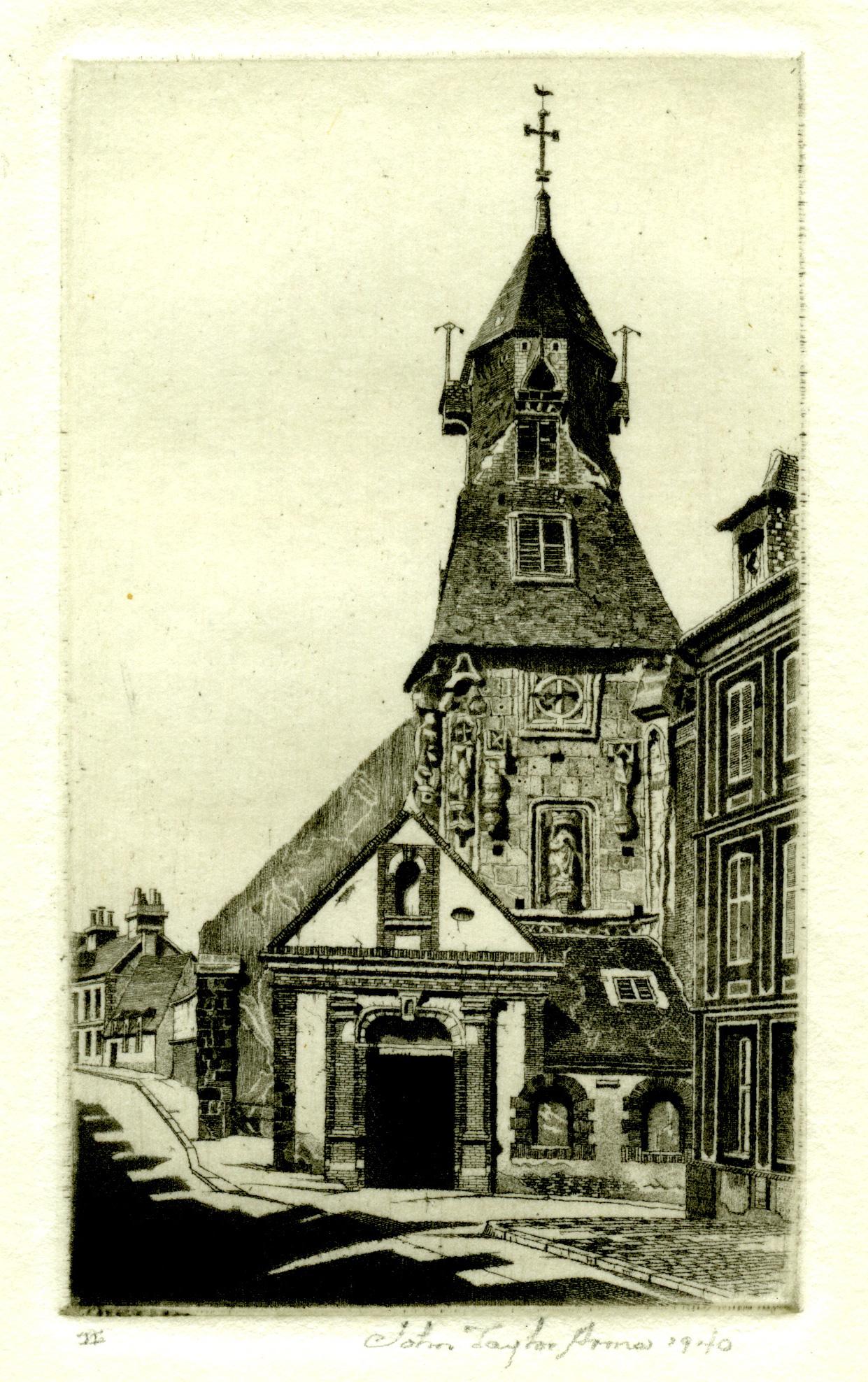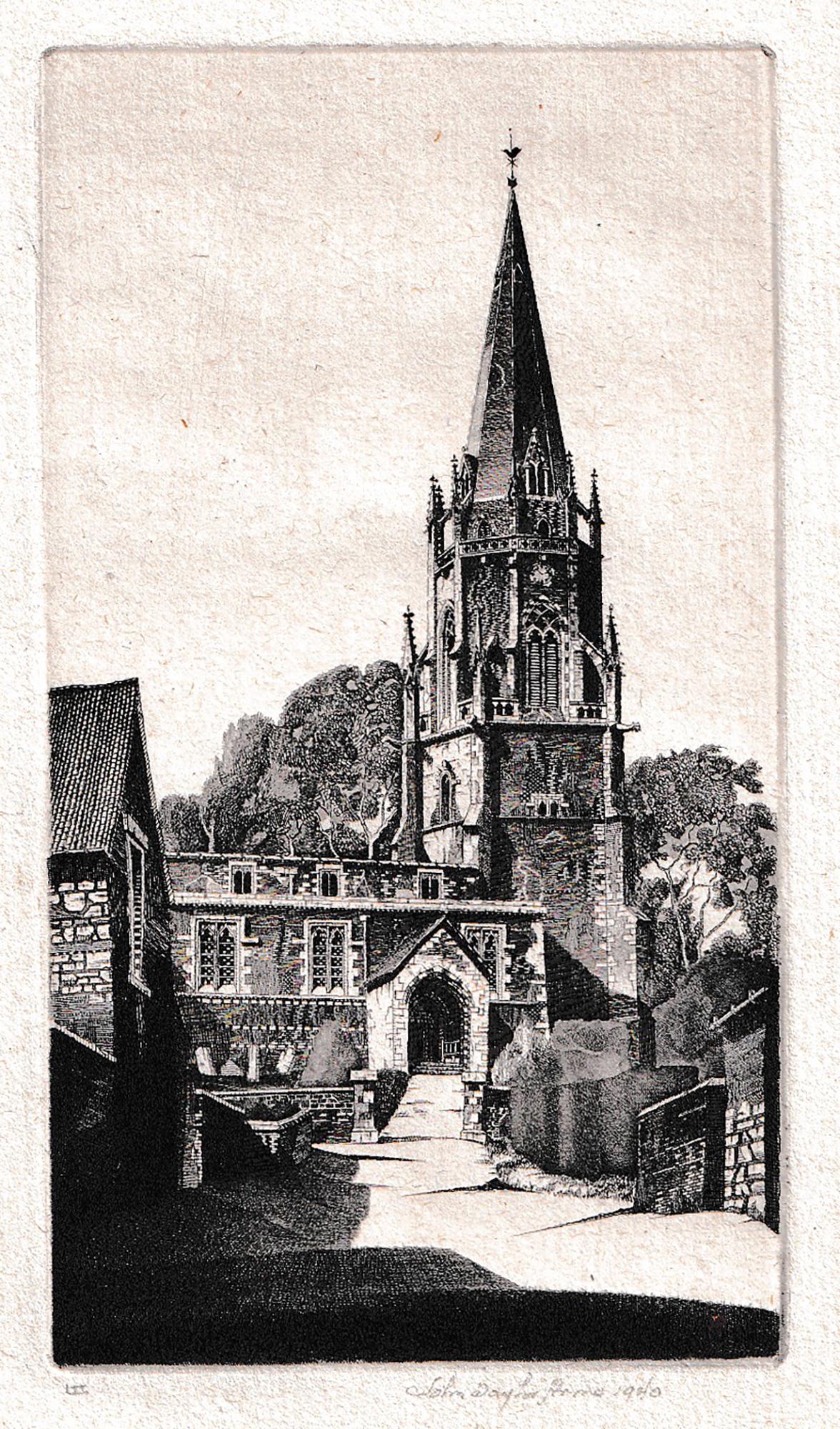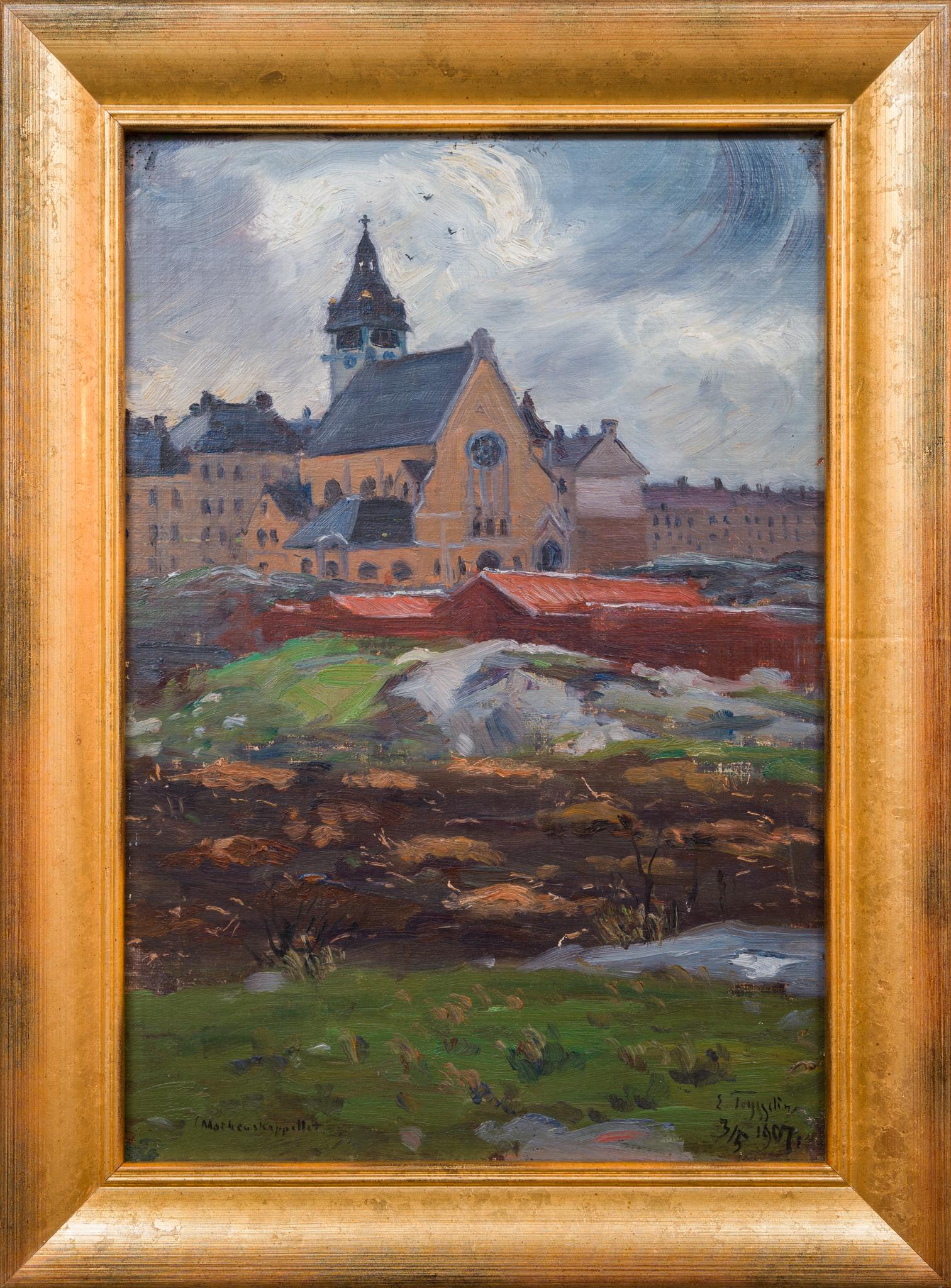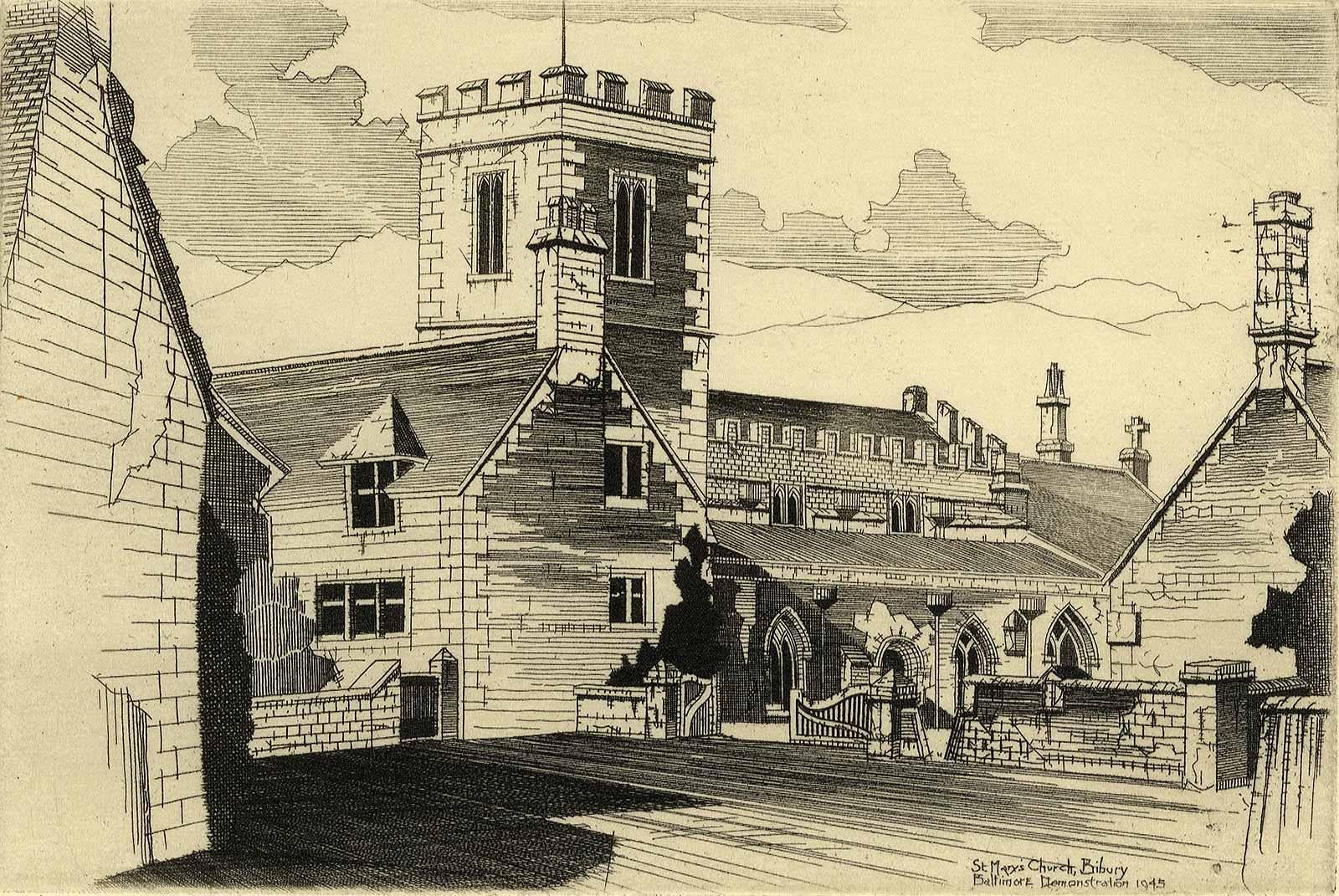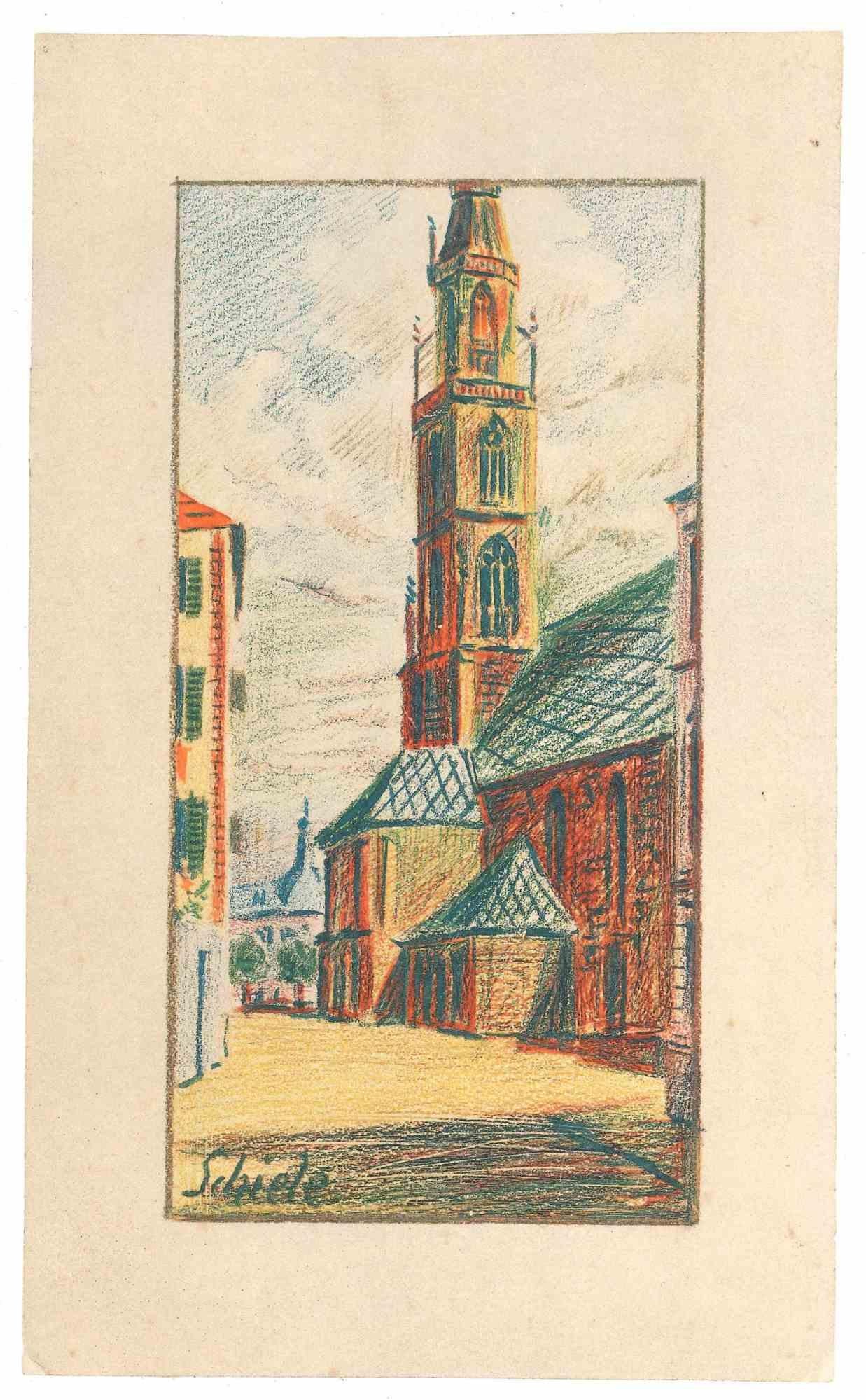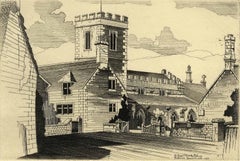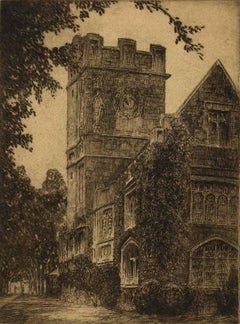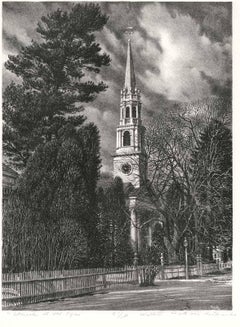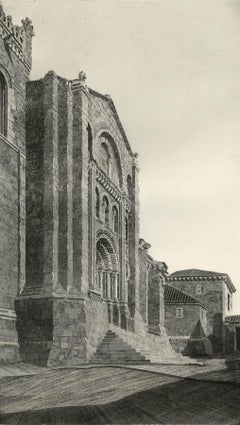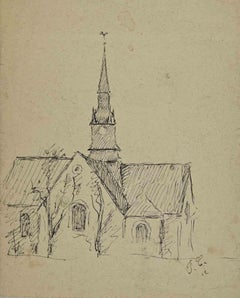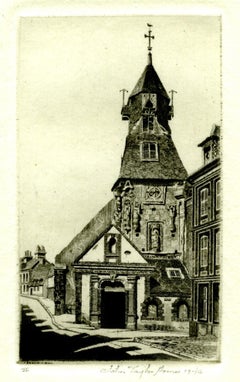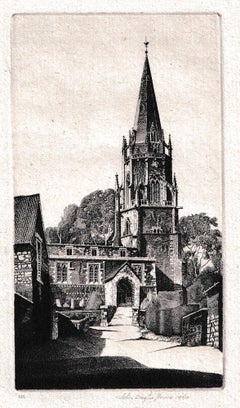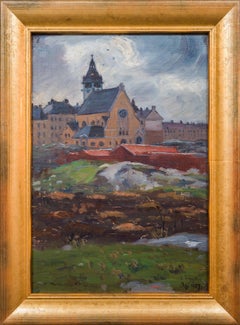Items Similar to The Old Uppsala Church (Sweden)
Want more images or videos?
Request additional images or videos from the seller
1 of 5
Victor TibergThe Old Uppsala Church (Sweden)circa 1975
circa 1975
$100
£75.51
€87.02
CA$141.14
A$155.61
CHF 81.41
MX$1,909
NOK 1,024.77
SEK 958.32
DKK 649.85
About the Item
"Old Uppsala Church" was done in small edition of 15. This impression is #3.
Gamla Uppsala (Swedish: Old Uppsala) is a parish and a village outside Uppsala in Sweden.
As early as the 3rd century AD and the 4th century AD and onwards, it was an important religious, economic and political centre. Early written sources claim that already during pre-history, Gamla Uppsala was well known in Northern Europe as the residence of Swedish kings of the legendary Yngling dynasty In fact, the oldest Scandinavian sources, such as Ynglingatal, the Westrogothic law and the Gutasaga talk of the King of the Swedes (Suiones) as the "King at Uppsala".
During the Middle Ages, it was the largest village of Uppland, the eastern part of which probably originally formed the core of the complex of properties belonging to the Swedish Crown, the so-called Uppsala öd, of which the western part consisted of the royal estate itself, kungsgården.[5]
It was also the location of the Thing of all Swedes which was a thing (general assembly) held from pre-historic times to the Middle Ages, at the end of February or early March.[6]. It was held in conjunction with a great fair called Disting, and a Norse religious celebration called Dísablót.[7][8] The Law of Uppland says that it was at this assembly that the king proclaimed that the leidang would be summoned for warfare during the summer, and all the crews, rowers, commanders and ships were decided.[9]
It was not only the Norse cultic centre, it also became Sweden's archbishopric in 1164.[10]
- Creator:Victor Tiberg
- Creation Year:circa 1975
- Dimensions:Height: 12 in (30.48 cm)Width: 9 in (22.86 cm)
- Medium:
- Movement & Style:
- Period:
- Condition:
- Gallery Location:New Orleans, LA
- Reference Number:1stDibs: LU84135204221
About the Seller
4.9
Recognized Seller
These prestigious sellers are industry leaders and represent the highest echelon for item quality and design.
Platinum Seller
Premium sellers with a 4.7+ rating and 24-hour response times
Established in 1988
1stDibs seller since 2018
799 sales on 1stDibs
Typical response time: 1 hour
Associations
International Fine Print Dealers Association
- ShippingRetrieving quote...Shipping from: New Orleans, LA
- Return Policy
Authenticity Guarantee
In the unlikely event there’s an issue with an item’s authenticity, contact us within 1 year for a full refund. DetailsMoney-Back Guarantee
If your item is not as described, is damaged in transit, or does not arrive, contact us within 7 days for a full refund. Details24-Hour Cancellation
You have a 24-hour grace period in which to reconsider your purchase, with no questions asked.Vetted Professional Sellers
Our world-class sellers must adhere to strict standards for service and quality, maintaining the integrity of our listings.Price-Match Guarantee
If you find that a seller listed the same item for a lower price elsewhere, we’ll match it.Trusted Global Delivery
Our best-in-class carrier network provides specialized shipping options worldwide, including custom delivery.More From This Seller
View AllSt. Mary's Church in Bibury, England
By John Taylor Arms
Located in New Orleans, LA
This image is stamped as being rom the personal collection of Arms Referenced as Fletcher #386 the image is signed .and inscribed in pencil and is from a small edition of 16. The An...
Category
1910s American Modern Landscape Prints
Materials
Etching
$146 Sale Price
46% Off
Church
Located in New Orleans, LA
An original print of a church signed in pencil by artist
Mr. H. Dewitt Welsh, Artist of Philadelphia, acting secretary of the Division of Pictorial Publicity Committee on Public Inf...
Category
Early 20th Century Landscape Prints
Materials
Etching, Aquatint
$98 Sale Price
34% Off
Congregational Church, Old Lyme, CT. (quintessential New England landmark)
By Walter DuBois Richards
Located in New Orleans, LA
The Old Lyme Congregational Church located on Ferry Road, a quintessentially New England landmark, was captured by Walter DuBois Richards. The church was a favorite subject of Old Ly...
Category
Late 20th Century American Modern Landscape Prints
Materials
Lithograph
Puerta del Obispo ( Romanesque Spanish Cathedral)
By John Taylor Arms
Located in New Orleans, LA
This image is by America's greatest etcher, John Taylor Arms. The Spanish cathedral in Zamora is an impressive example of Romanesque architecture located on the hilltop by the river ...
Category
1930s American Modern Landscape Prints
Materials
Etching
$440 Sale Price
20% Off
Houses and Church on the French Countryside (quaint village scene)
Located in New Orleans, LA
A rare color lithograph by late French artist, Éliane Thiollier. Edition of 275, certificate of authentication is provided. Minor acid staining from the old mat.
Éliane Thiollier s...
Category
1950s Contemporary Landscape Paintings
Materials
Lithograph
La Colegiata Toro (Romanesque Santa Maria la Mayor/Zamora province Spain)
By John Taylor Arms
Located in New Orleans, LA
John Taylor Arms created this superb architectural image of La Colegiata in 1935 in an edition of 153. It is #12 in his Spanish Churches series and is referenced as Fletcher #284.
One of the most characteristic examples of transitional Romanesque architecture in Spain, the church of Santa María la Mayor is inspired by the Cathedral of Zamora, in turn inspired by the Old Cathedral of Salamanca. The tower-dome is usually listed as one of the four most typical in León together with those in the cathedrals of Salamanca, Plasencia and Zamora.
The church was begun around 1170, and was finished in the mid-13th century. Two different directors of the work have been identified, according to the different types of stone used (limestone in the old sections, sandstone in the most recent ones), and by the barrel vaults...
Category
1930s American Modern Landscape Prints
Materials
Etching
You May Also Like
The Church - Drawing by Joseph Alexander Colin - Mid-20th Century
Located in Roma, IT
The Church is a drawing realized by Joseph Alexandre Colin in the Mid-20th Century.
China ink ivory-colored paper
Good conditions with slight foxing.
The artwork is realized throu...
Category
Mid-20th Century Modern Figurative Drawings and Watercolors
Materials
Pencil, Paper
Church of Saint Jean, Laigle, Orne
By John Taylor Arms
Located in Middletown, NY
Etching on white laid paper with an "England" watermark, 3 x 1 3/4 inches (76 x 45 mm), full margins. Signed, dated and inscribed "II" in pencil, lower margin. One of 13 trial proof ...
Category
Mid-20th Century American Modern Landscape Prints
Materials
Laid Paper, Etching
Wilby Church, Northhamptonshire, England
By John Taylor Arms
Located in Middletown, NY
A fine proof impression on antique paper
Etching on antique laid paper with a large heraldic watermark. 4 1/4 x 2 3/8 inches (109 x 61mm), full margins. Signed, dated, and inscribed...
Category
Mid-20th Century American Modern Landscape Prints
Materials
Laid Paper, Etching
Sankt Matteus Church in Stockholm, 1907
Located in Stockholm, SE
The painting we have for sale, executed by Swedish artist Erik Tryggelin on May 3rd, 1907, presents an atmospheric and dynamic view of Sankt Matteus Church in Stockholm. This piece i...
Category
Early 1900s Post-Impressionist Landscape Paintings
Materials
Oil, Board
Church of Bozen - Lithograph - 1990
By Egon Schiele
Located in Roma, IT
This lithograph from the portfolio "Egon Schiele" is a reproduction of " Kirche von Bozen ", an original artwork realized by Egon Schiele in 1907. The portfolio, that includes 10 lit...
Category
1990s Modern Landscape Prints
Materials
Lithograph
Church of Bolzano - Lithograph - 1990
By Egon Schiele
Located in Roma, IT
This lithograph from the portfolio "Egon Schiele" is a reproduction of " Kirche von Bozen ", an original artwork realized by Egon Schiele in 1907. The portfolio, that includes 10 lit...
Category
1990s Modern Landscape Prints
Materials
Lithograph
More Ways To Browse
Sweden Print
Vintage Chihuahua
Vintage Leotard
Ceramic Wall Art Installation
John Lautner
Lipstick Sculpture
Painted Birkin
Painting Man In Turban
Pyramids Giza
Scott Fitzgerald
Tarot Cards
Vintage Construction Workers
Vinyl Art Toy
1920 Oil On Board
Anna Wintour
Cherubs Oil Painting
Cream Ceramic Sculpture
Day Of The Dead

